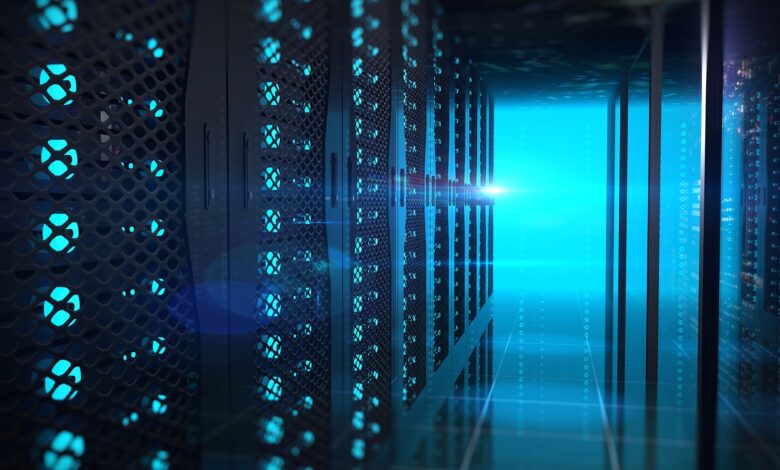
The global data explosion is accelerating, with projections estimating that it will reach over 394 zettabytes by 2028. This surge is largely driven by AI, IoT, and real-time applications like autonomous vehicles and smart cities. These innovations demand storage systems that are not only fast but also scalable, secure, and reliable. As a result, data centres must evolve to keep pace with computing demands.
The shift in storage infrastructure
Modern workloads require storage systems that support high throughput and ultra-low latency. In environments heavy in AI and machine learning, where GPUs process data in real time, storage bottlenecks can stall performance, underutilise expensive compute resources, and inflate infrastructure costs. High-performance SSDs that can feed data at sufficient speeds are crucial to unlocking the full potential of GPU-powered systems.
To handle growing data volumes, storage technologies are rapidly advancing. Solutions such as PCIe NVMe SSDs are becoming essential for enterprise workloads, but more traditional U.2 SSDs, known for their balance of speed and compatibility, remain widely used, particularly among server OEMs. Meanwhile, long-term archival technologies like ceramic-based storage — capable of preserving data for millennia — are being developed for cold storage needs.
Let’s look at some of the key storage challenges that data centre operators are facing, and the solutions that are offered by modern SSDs.
Performance and reliability
The performance of data centre facilities can be very variable. Inconsistent throughput and latency can compromise application efficiency, especially when handling high-write workloads such as logging, caching, and AI model training. These tasks can rapidly wear out drives, causing service disruptions and reduced hardware lifespan.
Storage reliability is just as critical. Power-loss protection, advanced error correction, and end-to-end data integrity mechanisms in enterprise-grade SSDs help ensure system resilience, maintaining data integrity under stress is vital. SSDs built for endurance and robust error handling offer the dependability required in high-stakes, data-intensive environments.
Minimising downtime and latency
Downtime is a costly risk that can range anywhere from a few thousand pounds up to multiple millions. Beyond financial loss, delays in data access impact productivity and user experience — especially in latency-sensitive sectors like finance or real-time analytics.
Advanced SSDs equipped with PCIe Gen5 interfaces significantly reduce latency and improve read/write speeds compared to SATA SSDs and HDDs. Their rapid data access capabilities improve system reliability and uptime, enhancing operational efficiency across applications. By minimising bottlenecks, these SSDs enable smoother data flow, especially in GPU-heavy environments.
Energy efficiency and sustainability
As sustainability goals become more prominent, reducing power usage in data centres even while meeting AI compute demands, is a top priority. According to the IEA, in 2023, data centres consumed around 340 TWh of electricity — roughly 1.3% of global usage. With demand expected to climb, energy-efficient solutions are essential.
Traditional HDDs consume more energy and generate more heat than SSDs. Although PCIe NVMe SSDs can have comparable power draw, their performance-per-watt is significantly better. Thanks to their high IOPS and faster data processing, they reduce overall operational time and energy consumption. Their efficiency is especially beneficial for mid- to high-tier deployments seeking to reduce both utility costs and carbon footprints.
Additionally, these SSDs support denser storage in smaller form factors, allowing data centres to scale without expanding physical space. This compact design aligns with both environmental and performance objectives.
Tips for specifying SSD storage
When specifying storage for the future, there are three key issues that data centre managers and storage architects will be most concerned with: optimal performance, enhanced security, and long-term cost savings.
They often struggle with performance variability, complex deployment and managing drive longevity, so opting for an SSD that has been manufactured with high reliability specifications will ensure consistent performance for optimal uptime. Managers should look out for host-initiated and controller-initiated telemetry functionality to facilitate real-time health monitoring and predictive failure analysis, and a long warranty period.
When it comes to security, drives that are TCG Opal 2.0 compliant and include AES 256-bit encryption will ensure robust protection, keeping out unauthorised users, and securing data even if the drive is stolen. Other features to consider are hardware-based power failure protection, NVMe end-to-end data protection, and firmware updates without reset.
And in terms of ROI, specifying the right SSD will pay off rapidly in high performance data centre edge deployments and AI training use cases with real-time QoS control. Both are essential for application support and scalability, as well as high-speed data processing. The initial investment will quickly balance against overall long-term cost savings due to improvements in performance, reduced power requirements and less downtime, making it a strategic economic choice.
The case for PCIe Gen5 SSDs
As outlined above, PCIe Gen5 SSDs are a transformative leap in server storage technology. Offering twice the bandwidth of Gen4, they reduce latency and enhance GPU utilisation — particularly important for AI training, machine learning, and real-time analytics. These drives allow organisations to maximise performance without needing a large number of SSDs, thereby saving on cost and energy.
Choosing Gen5 solutions requires careful planning. Organisations should assess current and anticipated workload needs over the next several years. Managers must evaluate application telemetry, growth projections, and infrastructure compatibility, including power delivery and thermal management, to ensure seamless adoption.
Empowering AI workloads
Next-generation SSDs are designed to meet the demands of high-performance computing. Built with cutting-edge controllers and thermal regulation, these drives enable fast, reliable data throughput in dense server environments. Their superior read IOPS and throughput make them ideal for saturating multiple GPUs, improving AI training times, and supporting edge computing deployments.
The evolution of data and its role in the digital economy demands a parallel evolution in storage infrastructure. From reducing downtime and improving reliability to cutting power consumption and scaling performance, next-gen SSDs, particularly those built on PCIe Gen5, will be foundational to future-ready data centres.





